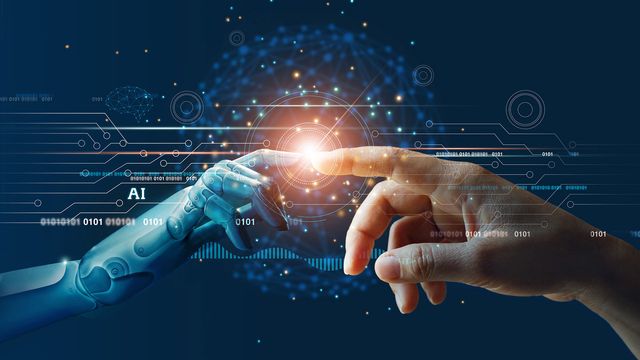Thank you. Listen to this article using the player above. ✖
Want to listen to this article for FREE?
Complete the form below to unlock access to ALL audio articles.
At the forefront of discovery, where cutting-edge scientific questions are tackled, we often don’t have much data. Conversely, successful machine learning (ML) tends to rely on large, high quality data sets for training. So how can researchers harness AI effectively to support their investigations? Published in Physical Review Research, scientists describe an approach for working with ML to tackle complex questions in condensed matter physics. Their method tackles hard problems which were previously unsolvable by physicist simulations or by ML algorithms alone.
The researchers were interested in frustrated magnets—magnetic materials in which competing interactions lead to exotic magnetic properties. Studying these materials has helped to advance our understanding of quantum computing and shed light on quantum gravity. However, frustrated magnets are very difficult to simulate, because of the constraints arising from the way magnetic ions interact.
Here, the team from Japan, France and Germany were interested in how the properties of a particular type of magnetic material change as it is cooled toward absolute zero. Their attention was focused on a particular phase called a “spin liquid”: just as liquid water freezes into ice, so this spin liquid freezes into a different kind of magnetic state. Yet when it came to identifying that state, they were unable to understand the results of their simulations.
“Recently, physicists have been excited about a type of quantum spin liquid which could help us to understand fault-tolerant quantum computers,” explained Professor Nic Shannon, Head of the Theory of Quantum Matter Unit at the Okinawa Institute of Science and Technology (OIST), and co-author on this study. “In 2020 we realized that this spin liquid could occur naturally in a class of magnetic materials called ‘breathing pyroclores’. But we couldn’t figure out what happened to that spin liquid at low temperatures.”
The researchers from OIST teamed up with ML experts from LMU Munich, who had developed an ML algorithm which could classify conventional magnetic orders.
“Our method is highly interpretable, meaning it’s easy for humans to decipher the decision-making processes, and doesn’t rely on prior training of the model. This makes it better suited for such applications where data is limited, compared to other forms of machine learning,” said Professor Lode Pollet of LMU Munich, co-author on this study. “Before we teamed up with OIST, we had never applied it to a spin liquid, so were excited to see if it could be useful in gaining insights into such difficult physics problems where all other approaches had failed.”
To model their spin liquid cooling, the team used a computational technique called Monte Carlo simulation. By running their simulation data through the ML algorithm and processing the results, the researchers could see patterns emerging from within the ML output. They were able to use these results to then run the Monte Carlo simulations in reverse, seeding simulations at low temperature with the patterns found by ML, and heating the previously unknown phase to simulate the transition in the opposite direction. These new simulations confirmed the properties of this phase, bringing new understanding to this field of quantum research.
“What was interesting is that neither man nor machine alone were able to solve this problem—it was more like colleagues collaborating, with the algorithm spotting something we hadn’t, and vice versa, building together towards this complete picture of understanding,” added Dr. Ludovic Jaubert of CNRS, University of Bordeaux. “It’s exciting, because there are many more complex problems to solve within condensed matter physics which we may be able to achieve through such a combined human and AI approach.”
Reference: Sadoune N, Liu K, Yan H, Jaubert LDC, Shannon N, Pollet L. Human-machine collaboration: Ordering mechanism of rank-2 spin liquid on breathing pyrochlore lattice. Phys Rev Res. 2025;7(3):033061. doi: 10.1103/c6z1-wh6l
This article has been republished from the following materials. Note: material may have been edited for length and content. For further information, please contact the cited source. Our press release publishing policy can be accessed here.
